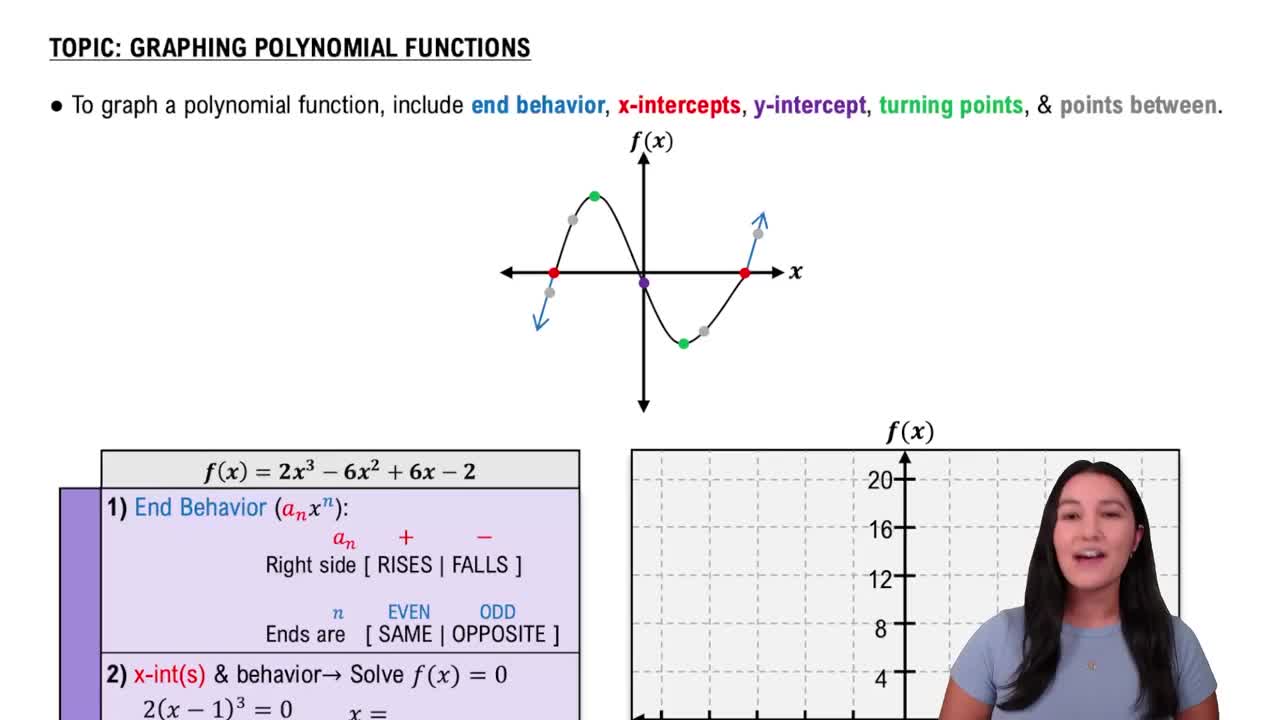Table of contents
- 0. Review of Algebra4h 16m
- 1. Equations & Inequalities3h 18m
- 2. Graphs of Equations43m
- 3. Functions2h 17m
- 4. Polynomial Functions1h 44m
- 5. Rational Functions1h 23m
- 6. Exponential & Logarithmic Functions2h 28m
- 7. Systems of Equations & Matrices4h 6m
- 8. Conic Sections2h 23m
- 9. Sequences, Series, & Induction1h 19m
- 10. Combinatorics & Probability1h 45m
1. Equations & Inequalities
Linear Inequalities
Problem 34c
Textbook Question
Solve each polynomial inequality in Exercises 1–42 and graph the solution set on a real number line. Express each solution set in interval notation. (1−x)^2(x−5/2)<0
 Verified step by step guidance
Verified step by step guidance1
First, identify the critical points by setting each factor of the inequality \((1-x)^2(x-\frac{5}{2}) < 0\) equal to zero. Solve \((1-x)^2 = 0\) and \(x-\frac{5}{2} = 0\).
Solve \((1-x)^2 = 0\) to find \(x = 1\). Since this is a squared term, it will be a repeated root.
Solve \(x-\frac{5}{2} = 0\) to find \(x = \frac{5}{2}\).
Use the critical points \(x = 1\) and \(x = \frac{5}{2}\) to divide the number line into intervals: \((-\infty, 1)\), \((1, \frac{5}{2})\), and \((\frac{5}{2}, \infty)\).
Test a point from each interval in the inequality \((1-x)^2(x-\frac{5}{2}) < 0\) to determine where the inequality holds true. Remember that \((1-x)^2\) is always non-negative, so focus on the sign of \(x-\frac{5}{2}\) in each interval.
Recommended similar problem, with video answer:
 Verified Solution
Verified SolutionThis video solution was recommended by our tutors as helpful for the problem above
Video duration:
6mPlay a video:
Was this helpful?
Key Concepts
Here are the essential concepts you must grasp in order to answer the question correctly.
Polynomial Inequalities
Polynomial inequalities involve expressions where a polynomial is compared to zero using inequality signs (e.g., <, >, ≤, ≥). To solve these inequalities, one typically finds the roots of the polynomial, which are the values that make the polynomial equal to zero, and then tests intervals between these roots to determine where the polynomial is positive or negative.
Recommended video:

Linear Inequalities
Interval Notation
Interval notation is a mathematical notation used to represent a range of values on the real number line. It uses parentheses and brackets to indicate whether endpoints are included (closed intervals) or excluded (open intervals). For example, the interval (1, 5] includes all numbers greater than 1 and up to and including 5.
Recommended video:

Interval Notation
Graphing Solution Sets
Graphing solution sets on a real number line visually represents the solutions to an inequality. Each interval where the inequality holds true is marked, often using open or closed circles to indicate whether endpoints are included. This graphical representation helps in understanding the range of values that satisfy the inequality.
Recommended video:

Graphing Polynomial Functions
Related Videos
Related Practice












